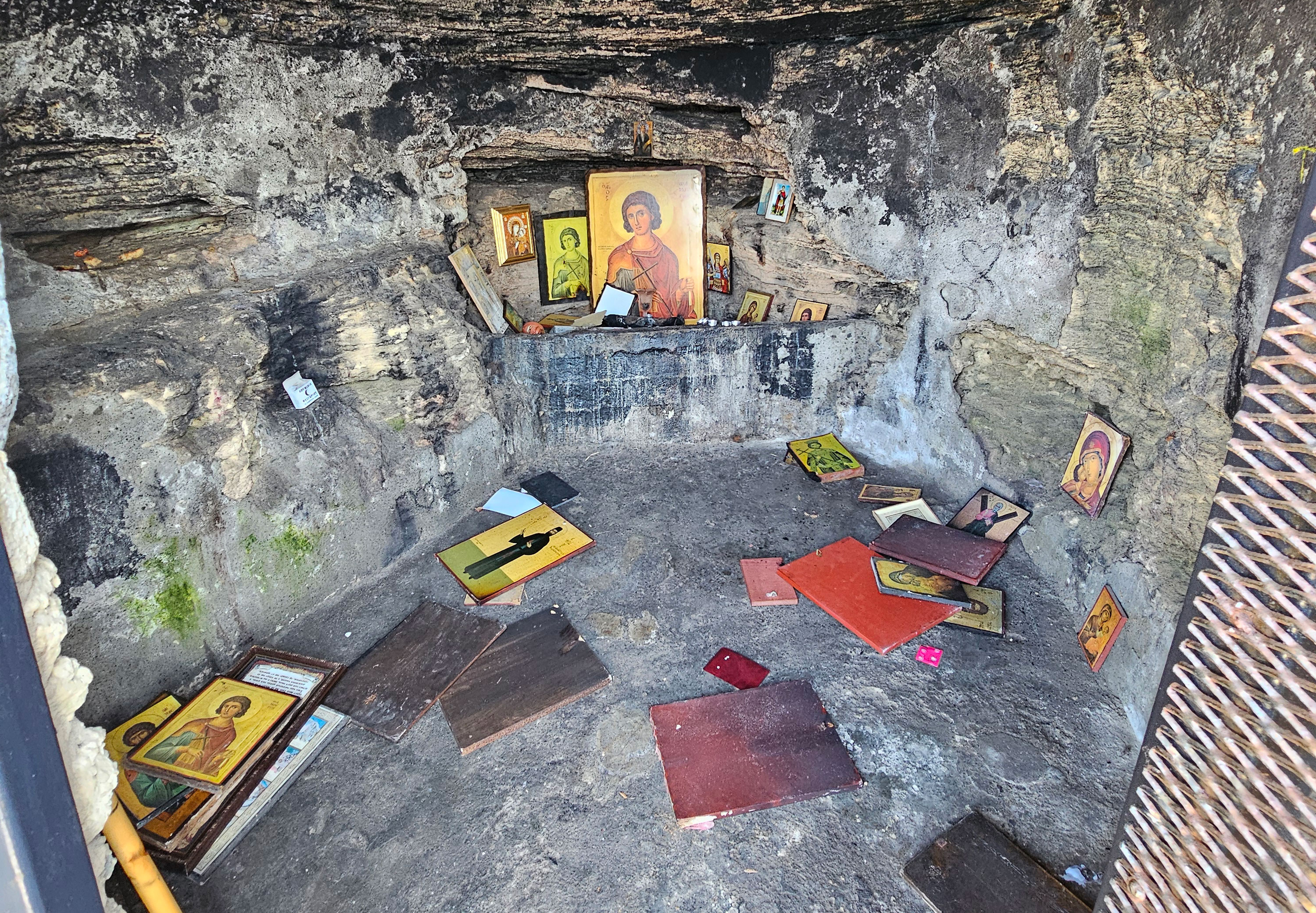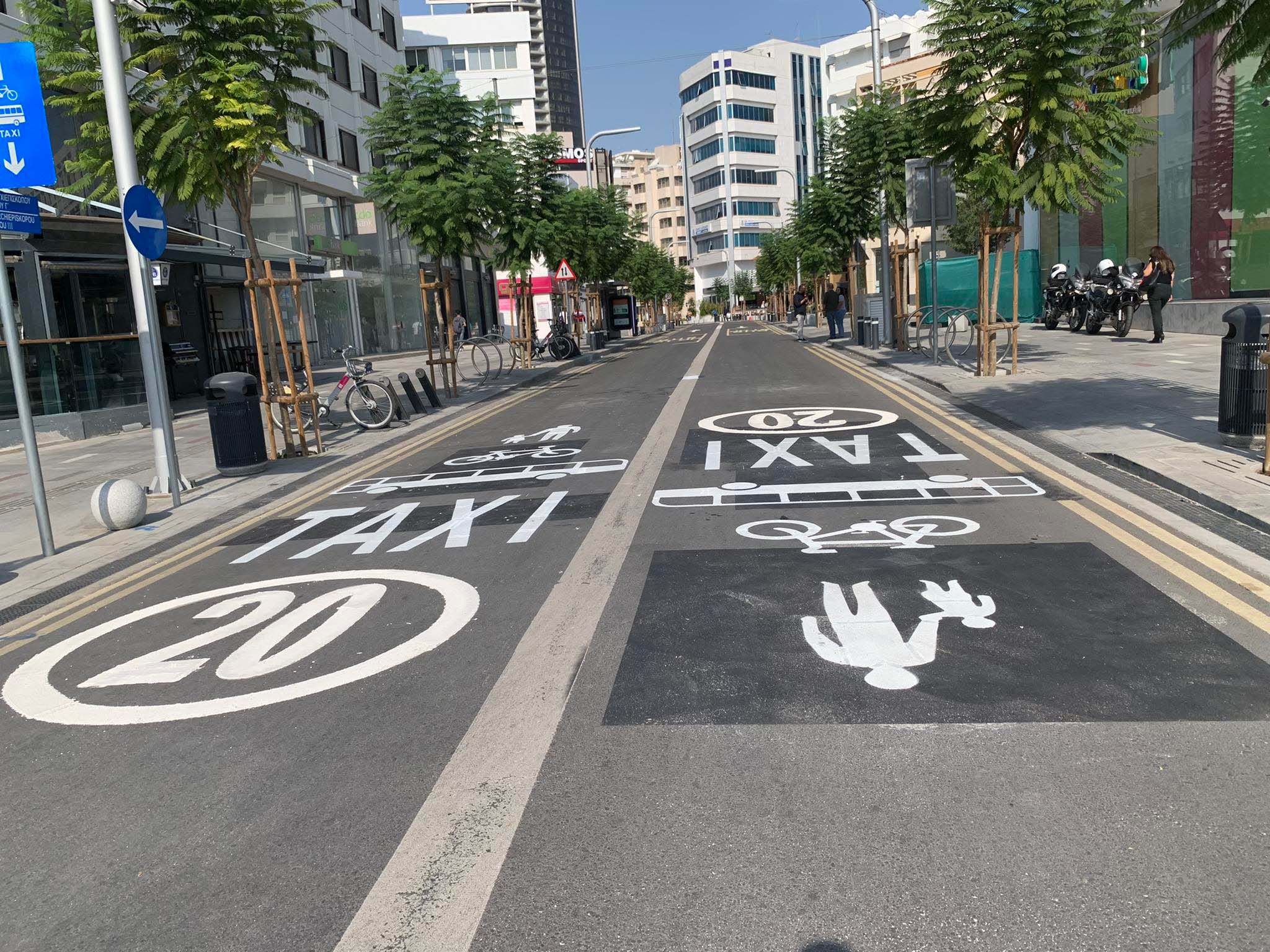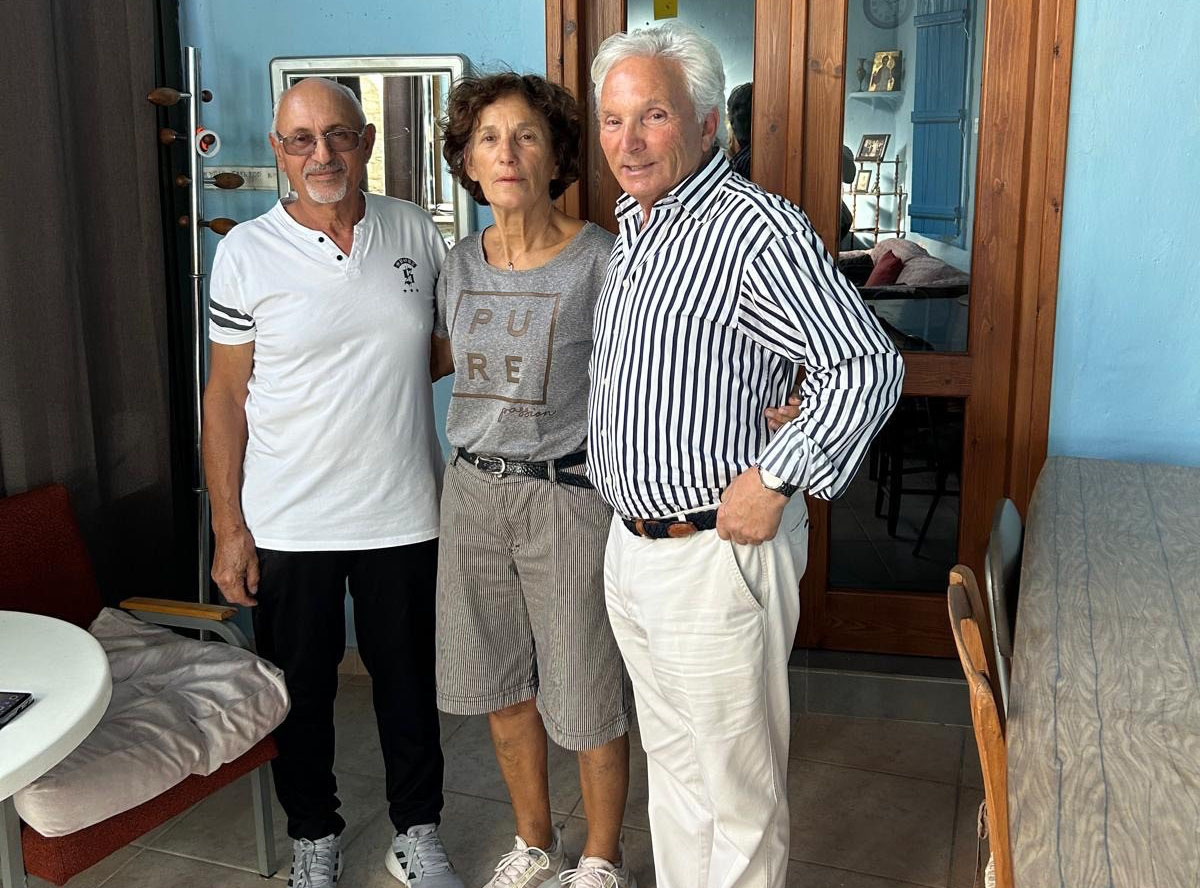Officials from the Turkish Cypriot Kyrenia municipality will visit the historic Saint Phanourios cave to examine its state after photographs which appear to depict acts of vandalism had circulated in local media.
The cave is located near the Kyrenia district village of Ayios Georgios and is a holy site for Orthodox Christians.
A spokesperson for the Turkish Cypriot Kyrenia municipality told the Cyprus Mail that “a team from the municipality will visit the site to evaluate the situation and examine the state of the cave”.
That team, they added, “will see for itself to what extent the cave has been vandalised and what needs to be done to rectify the situation if vandalism has been committed and will take their own photographs to verify what has happened”.
Photographs have circulated in the media in recent days of holy icons depicting important figures in Christianity strewn across the cave’s floor, with one member of the public reporting that used condoms were also found and that the walls had been marked.
The Cyprus News Agency (CNA) reported on Wednesday that one person who visited the cave recently said they had been “confronted with an image of shame and a profound insult to the Orthodox faith, and especially to the memory of Saint Phanourios”.
Earlier, Kyrenia’s Greek Cypriot mayor-in-exile Joseph Violaris on Wednesday expressed fury at the reports and demanded an investigation.
“We certainly condemn these actions. We want them to be investigated,” he told CNA, adding that while this is something which “could also have happened” in the Republic of Cyprus, there may have been ulterior motives behind the incident.
“It may have been organised, just as I understand that the arrest of the five Greek Cypriots as a retaliation for Aykut was organised,” he said.
Israeli property developer Simon Aykutwas arrested by the Republic of Cyprus’ authorities last year and remains in custody, standing accused of developing and selling €43 million worth of property on Greek Cypriot land in the north.
Violaris also pointed out that the feast of Saint Phanourios is to be celebrated on August 27, and that Greek Cypriots from Ayios Georgios typically visit the village, the cave and the church which sits above it.
However, he said, “it is most likely that this may be a reason to not allow them to go this year”.
According to Greek orthodox tradition, when Saint Phanourios was being pursued by the Saracens, he swam on his horse from Anatolia to the site near Ayios Georgios, where his horse died.
He then hid in the cave and was as such saved from his enemies.
The cave was later dedicated to him, and became a pilgrimage destination, while the church which sits above it was built in 1973.
At the cave’s entrance, there are fossilised bones, which are, according to tradition, the remains of Saint Phanourios’ horse.
Meanwhile, scientists believe the bones may have belonged to a pygmy hippopotamus.







Click here to change your cookie preferences